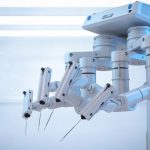Using the latest insights from Advanced Sensor Research’s article “Flexible, Wearable Mechano‐Acoustic Sensors for Real‐Time, Wireless Monitoring of Low Frequency Body Sounds,” this study unveils a new design for flexible and wearable sensing platforms. These platforms are structured to capture low-frequency physiological signals from human bodies, such as heart rates and swallowing patterns. By employing a nanothin film and piezoresistive Si cantilever to detect soundwaves transmitted through soft air channels, the new sensing platforms achieve high sensitivity while ensuring user comfort. The research extends previous knowledge by integrating wireless, real-time monitoring capabilities into a non-invasive, stretchable format.
Recent advancements in biomedical technology have introduced flexible mechanical electronics for heart rate monitoring, which can be utilized in everyday settings. Conventional mechanical sensors, however, face performance issues when placed directly on the skin due to significant skin deformation and external forces. The study aims to resolve these challenges by creating mechano-acoustic sensing platforms where all sensing components are shielded from direct skin movement.
Design and Functionality
The innovation lies in allowing cardiovascular pulse waves to travel through a hollow, flexible microchannel, causing vibrations in the piezoresistive sensing element. This novel design ensures consistent and accurate measurements without direct contact pressure, thereby preserving the device’s integrity. Experimental analyses verified the system’s wireless capabilities in detecting pulse waves and heart rates, yielding results comparable to commercially available devices.
Furthermore, the mechano-acoustic sensors can be adapted to other applications, such as detecting swallowing patterns from laryngeal movements. This adaptability opens avenues for non-invasive and remote monitoring systems, offering potential benefits for patients with conditions like dysphagia.
Comparative Analysis
Earlier research in the field has focused on attaching sensors directly to the skin, which often led to complications due to skin deformation. Unlike these previous methods, the current study’s approach avoids direct skin contact, thus significantly reducing performance degradation and device damage. This marks a departure from traditional practices and shows promise in improving the longevity and reliability of wearable sensors.
Additionally, the integration of wireless technology into these sensors sets them apart from earlier models that required physical connections. The wireless aspect not only enhances user comfort but also broadens the scope of potential applications, making these sensors more versatile and user-friendly.
The study provides a comprehensive look at how mechano-acoustic sensing platforms can revolutionize the monitoring of physiological signals. By leveraging nanotechnology and innovative design, these sensors present a more comfortable and reliable alternative to traditional methods. The inclusion of wireless capabilities makes them particularly suitable for continuous, real-time monitoring in various settings.
Future research could focus on expanding the range of physiological signals that these sensors can detect, as well as improving their integration with other medical devices. Understanding the full potential and limitations of this technology will be crucial for its broader application in healthcare.










